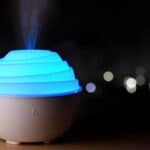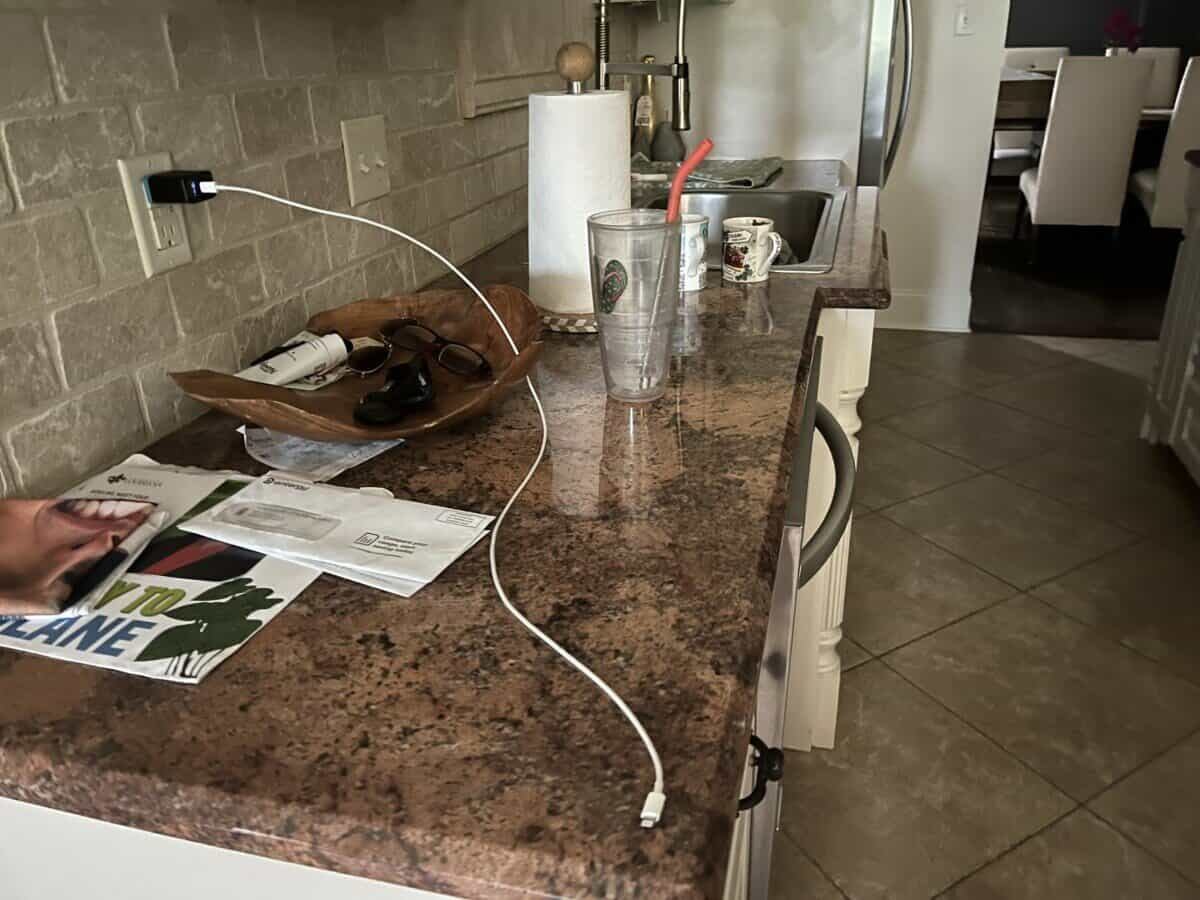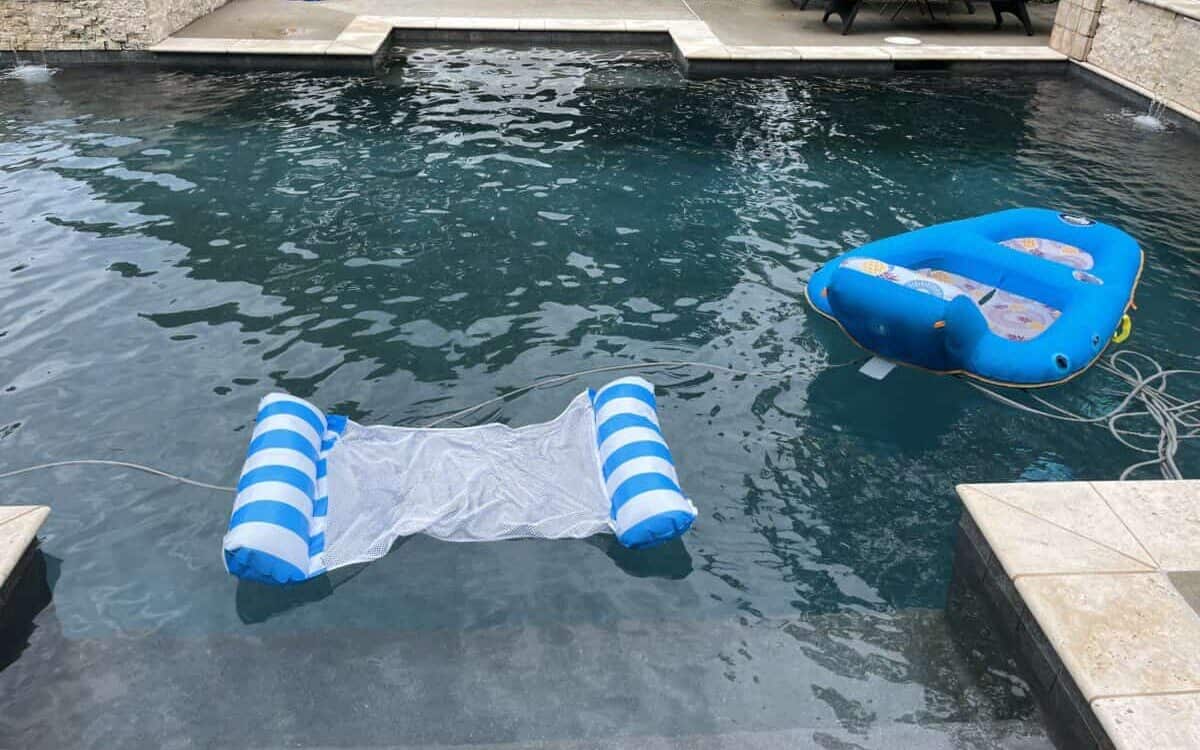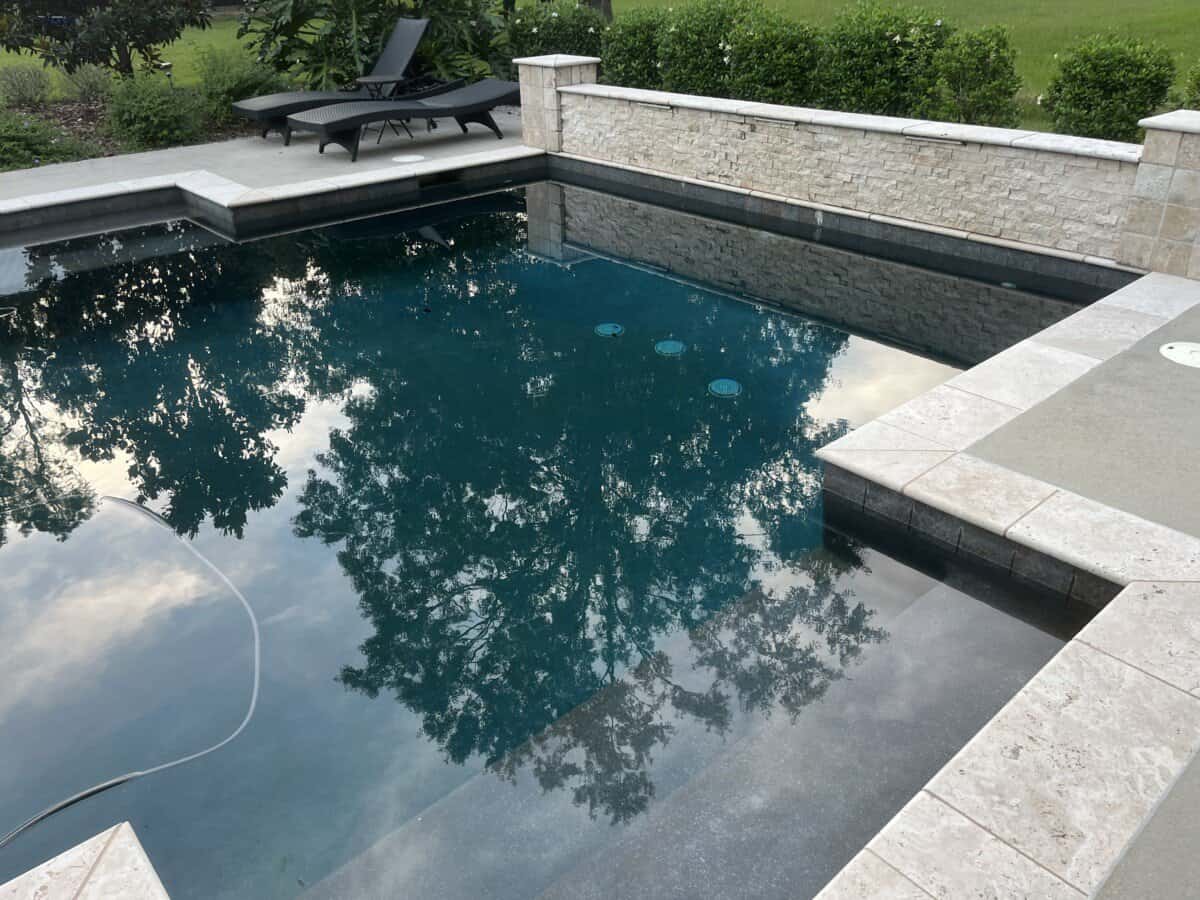It’s Wednesday and we have a party scheduled for this weekend, my wife just informed me that the pool is a mess. I walked outside and looked at the green water, wondering how long will it take to clean and have it ready for our guests to swim.
Depending on the size of your pool and how often you use it, cleaning can take anywhere from one to four hours. To clear green pool water could take 3 to 4 days and possibly longer depending on your filter and chlorine.
If you’re a pool owner, then you know that keeping your pool clean is essential for enjoying it during the summer. But how long does it actually take to clean a pool?
In this blog post, we’ll provide an overview of the cleaning process and give you an idea of how much time it takes to properly clean a pool. We’ll also include tips on how to make the process go more quickly. Keep reading to learn more.
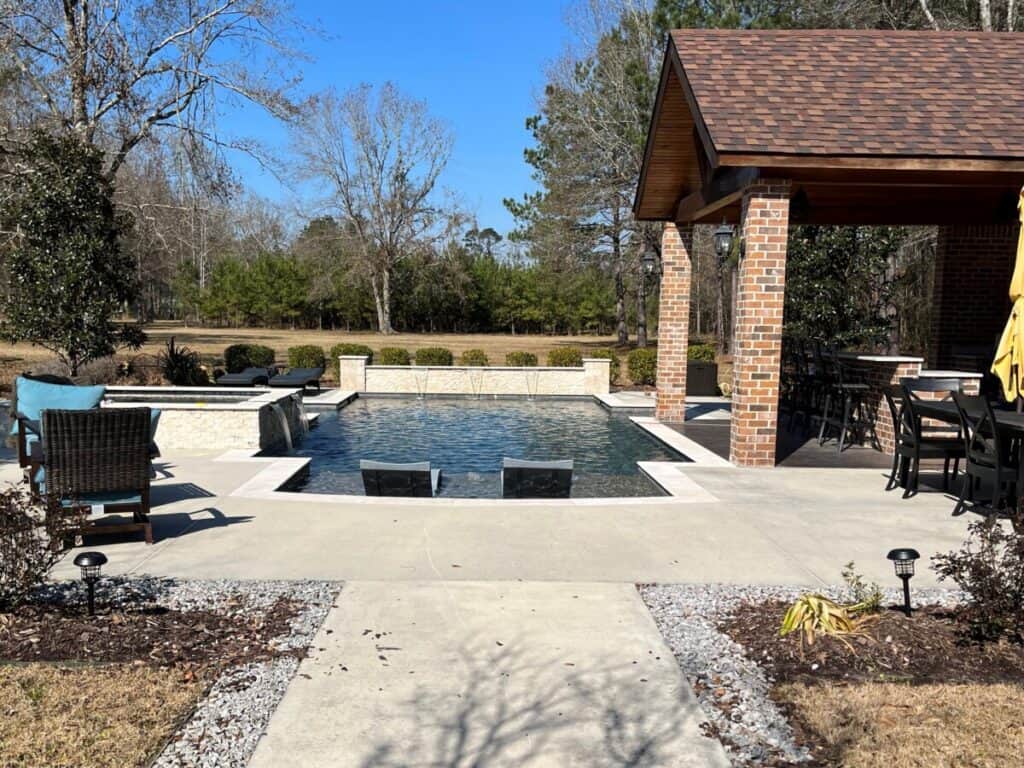
Cleaning Methods-How to Clean a Pool?-
Having a pool at home is one of the best investments you can make. Besides giving a unique touch to your home or garden, it gives you a place to relax and have fun with your family.
The little ones in the house usually enjoy it more, and for this reason, it is important that you keep it in optimal conditions for its use.
The most important thing to remember about pool maintenance is that it should be done on a regular basis. pools can suffer from neglect. It’s recommended that you perform bi-weekly checks to ensure your pool is running correctly and the water is balanced.
The time to clean a pool depends on the method we choose. There are two methods of cleaning a pool; manual vacuum cleaning and automatic vacuum cleaning. Manual cleaning takes more time.
Several other factors play roles in the time it takes to clean swimming pools, such as the size of the pool, the chemical imbalance, the accumulation of debris, and the algae buildup. Trees are near our pools so in the fall season I scoop out leaves every other day.
Pool leaf covers work great to trap leaves when you’re not swimming. You simply spread the net over the pool and it will drastically reduce pool cleaning time.
However, if we opt to manually vacuum, an average-sized and well-maintained pool should take more than about 30 minutes to clean. But if the pool is poorly maintained, it can take up to 45 minutes to 1 hour.

However, I have an electrical automatic pool cleaner, The Polaris 9550, I set it for an hour and thirty minutes and it typically cleans the entire pool during this time.
But not all automatic pool cleaners are the same technical factors such as suction power and acceleration speed that will impact the cleaning time. This process may take up to 6 hours depending on the conditions.
However, you just push the on button and let the automatic cleaner do its job, you just need to monitor the filter bag and clear it out when it’s full. The best robotic pool cleaners efficiently remove leaves and debris from pools.
Pool cleaning process
Swimming pools are difficult to clean and maintain during the summer months because heat encourages algae growth. But it is extra work that must be done if we want to enjoy it on hot summer days.
Normally, the automatic maintenance of the pool is already incorporated, and they are equipped with water filtering systems that remove dirt, dead plants, flowers, insects, etc., automatically.
In addition, and among its advantages, automatic cleaners can improve the efficiency of the products that treat the water and keep it clean. These small cleaners crawl the bottom of your pool and help disburse chlorine and break up algae.
But there are often times you need to break out the stiff wire brush and scrub manually. We recently lost electricity after a hurricane. I spend days on the end of a long wire brush battling algae growth.
In addition to physically cleaning pools, you also need to chemically treat them, which is essential to keeping your water clear. For a standard chlorine pool, you should test your water frequently and keep chlorine tablets in your skimmers. Check this twice a week.
If you have a saltwater system, it should come with a low salt indicator. Whenever this light is illuminated add salt and dump an appropriate amount of shock. I typically use 6 lbs. of shock each time I add salt.
Why Maintaining pH and Chlorine Levels are Important?
Maintaining pH and chlorine levels are two of the most important things you can do to keep your swimming pool safe and clean. Improper pH levels can cause corrosion and scaling, while too much chlorine can cause eye irritation.
By keeping a close eye on your pH and chlorine levels, you can ensure that your swimming pool is always in good condition. It is important that the pH and chlorine are at an optimal level in the pool.
You can measure the chemical properties of your pool water with a chlorine and pH analyzer kit. Keeping chlorine levels between 1 and 3 ppm will help eliminate any microorganisms found in the water, as well as the risk of skin and eye irritation.
And keeping the pH between 7.2 and 7.6 will reduce the risk of deteriorating your pool surface and will help increase the efficiency of the chlorine. Similarly, it is important to apply algaecide and shock regularly every 15 days.
Frequency to Put Chlorine in a Pool
Remember that chlorine is a vital component of your pool’s health, so you should check the levels periodically. During the summer and when used frequently you should check the water more frequently.
To obtain a chemical reading of your pool water you can buy an analyzer at your local pool store. When I go to our pool store I often bring a sample of my pool water to be evaluated. They can run a quick test while I wait and offer advice about the chemicals I need.
Frequency to Replace Pool Water
Changing the pool water is an absolutely necessary process for the safety, hygiene, and conservation of the pool and to guarantee optimal bathing conditions.
Considering these facts, it is advisable to change the pool water in a period of approximately 5 to 6 years, but it depends on your pool construction, water maintenance, and system.
Factors That Can Affect How Long It Takes to Clean a Pool
Cleaning a pool can be a daunting task, but with the right tools and knowledge, it can be done relatively easily. There are several factors that can affect how long it takes to clean a pool, such as the size of the pool, season, the type of filter system, and the amount of debris in the water.
By understanding these factors, you can plan ahead and make sure your pool is clean in no time. A large pool takes longer to clean than a smaller one, especially if you need to brush the walls.
In the fall and winter, I spend a lot of time scooping leaves and cleaning out the pool, and making sure the skimmer baskets are clear of leaves. During the summer more time is spent ensuring the water balance is correct and cleaning the pump filters.
The type of filter system plays a major role in cleaning time. I’ve had both sand and cartridge filters and without a doubt, sand filters are easier and quicker to clean.
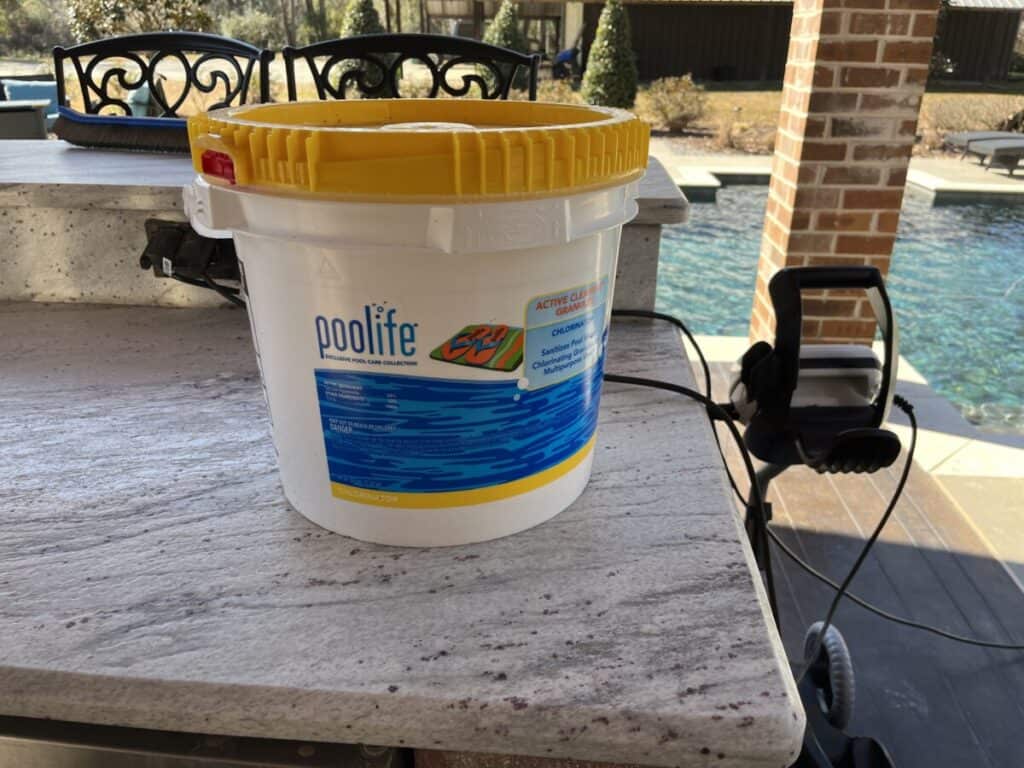
Tips for Cleaning Your Pool Quickly and Efficiently
Summer is the time for swimming, friends, and sunshine. What’s not to love? As much as we all enjoy a dip in the pool, no one likes cleaning it. Here are some tips to make sure your pool cleaning process is quick and efficient.
Note: It’s critical to learn how much shock to use and how often. It’s different for every pool, so check with your local pool professional for advice.
· Clean the walls, bottom, and stairs of your pool with the help of a wide stiff brush, I use a wire brush. Check with your pool store before using one because they can damage some surfaces.
· With a net to collect all the floating waste such as leaves, insects, and other debris. Check your skimmers and clean them if needed.
· Check your skimmer baskets, and inline filters and clean them. Run your pool pump at least 8 hours a day so that the water and chlorine circulate. I keep mine on for 12 hours during the summer and 8 hours in the winter.
· Check the pH level of the water. Apply chemical products (chlorine, anti-algae, fungicide, flocculants) following the instructions and frequency indicated by their manufacturer.
· To properly clean the bottom of a pool, bottom cleaning machines will be used, with brushes and special pool products that contain certain acids.
· Soap or detergent should never be used, as they can react with chlorine.
· The anti-algae will always be added at the beginning and at the end of the season.
Final Word
Just like cleaning your house, it’s always easier if you stay ahead of problems. So with regular maintenance, you should be able to clean your pool within 30 minutes.
Below is a YouTube video that shows you some of the basics you need to know to clean your pool.


